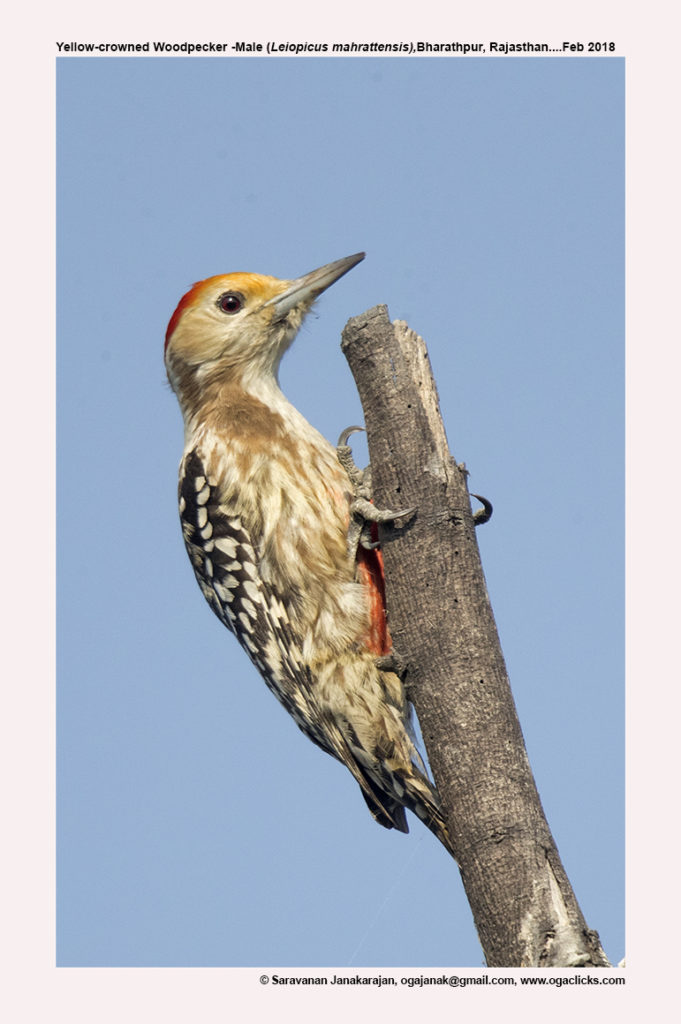Yellow-crowned Woodpecker

Yellow–crowned Woodpecker Dendrocopos mahrattensis
Etymology:
- Dendrocopos : Greek word dendron tree; kopos – striking
- Mahrattensis : From Mahratta Country, Deccan, India.
Vernacular Names: Pun: Chhota katphora, Toka, M.P: Chitla katkola, Guj: Kabaro lakkad-khod, Mar: Kaudya sutar, Maratha sutar, Pagadiwala sutar, Pivlya Mukutacha Sutar, Te: Vadrangi pitta, Hindi: Maratha Kathfoda, Piltaj Kathfoda
Distribution in India: Widespread resident in India.
Description: Size of 17–18 cm; Wt. of 28–46 g. The male has golden-yellow forehead and forecrown, red on hindcrown and nape, dark brown on hindneck; white sides of head tinged or streaked brownish below eye and on ear-coverts; rich brown rear malar stripe continuing upwards behind ear-coverts and down on to upper breast side. It has a white chin and throat sometimes tinged brown; blackish-brown or black upperparts, feathers broadly edged white near tips, rump largely white; white uppertail-coverts with black central wedge; wing-coverts are tipped white, flight-feathers are barred white. The uppertail is dark brown-black, fully barred white; whitish below, streaked brown or blackish, streaks often lacking or indistinct in breast centre but broad on breast sides and upper flanks, belly centre is orange-red. It has a long bill fairly straight, slightly chisel-tipped, and slate-grey to horn, paler base of lower mandible. The iris is brown to red-brown and legs are blue-grey. The female has yellowish crown with no red or with just few red tips and brownish nape. The juvenile is duller than adult, more brownish above, with streaks below more diffuse, belly is pinker, eyes are brown, and bill is paler, male with some orange-red on crown and often nape, female with a few orange-red feathers in central crown.
Habitat: It is found in dry to very dry open woodland and desert scrub, deciduous woodland, second growth, riverine forest, wild olive woodland, plantations, and trees bordering roadsides or watercourses, cultivations and gardens. It is found from lowlands to 2000m.
Food habits: It eats Bark-dwelling insects, caterpillar’s grubs and dragonflies, fruits and nectar. It forages singly or in pairs, members of which keep in loose vocal contact; also joins mixed-species flocks. It stays mostly in crown of trees and on trunks, comes down to the ground rarely. It regularly clings upside-down. It excavates bark and dead wood for insect larvae. It pecks holes in dry pods of flowers extract insect larvae.
.Breeding habits: They breed in Feb–Jul, also Dec, in Indian Subcontinent; Feb–Apr in SE Asia. The nest-hole is excavated in dead section of live tree, often on underside of a sloping branch. They lay a clutch of 3 eggs. The incubation period is 13 days and both parents incubate and both feed chicks.